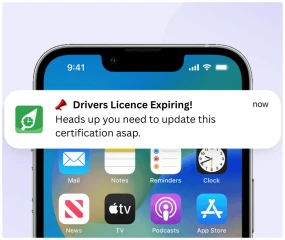Understanding the clock in clock out meaning is essential for businesses. It refers to how employees record the start and end of their workday. This process is crucial for tracking working hours, ensuring accurate pay, and improving accountability. Modern tools like time clock apps have replaced traditional methods, making the process more reliable and efficient. For small businesses, investing in a modern clocking system can save time, reduce errors, and enhance workforce management, allowing owners to focus on growth rather than administration.

What does clocking in and out mean?
The process involves employees using a clocking system to record their work hours. In the past, this was done with punch cards or manual timesheets. Today, tools like time and attendance tracking apps allow businesses to monitor employees' time more effectively.
For example, employees clock in using their phones or tablets, and the system automatically tracks their hours worked. This ensures accurate data for payroll and compliance. Additionally, modern systems include features like real-time reporting, helping managers stay informed about who is on-site and who has completed their shifts.

Why is tracking working hours important?
Recording when an employee works has several benefits:
- Fair pay: Ensures employees are paid for the correct hours worked.
- Compliance: Meets legal requirements for recording employees' work hours.
- Accountability: Reduces time theft and helps businesses track employees' time accurately.
Tools like RosterElf’s time clock app help businesses streamline these tasks while improving accuracy. This makes it easier for businesses to maintain trust and transparency with their workforce.
How have clocking systems evolved?
Traditional methods
In the past, employees used punch cards or wrote their hours manually. These methods often led to errors and could be easily manipulated. Manual systems also required significant administrative time to compile and verify data for payroll.

Modern tools
Digital solutions like tracking apps have revolutionised workforce management. Features include:
- Mobile clock-ins: Employees use their phones to record their time.
- GPS verification: Confirms employees clock in at the correct location.
- Real-time data: Tracks employees' work hours automatically and accurately.
- Customised reports: Managers can analyse attendance trends and make informed decisions.
What are the legal requirements?
In Australia, businesses must record working hours, breaks, and leave. The Fair Work Ombudsman requires accurate records to avoid penalties. Failing to comply with these regulations can result in fines, disputes, and damage to a company’s reputation.
Modern tools like time clock systems make this easy by automating record-keeping. This helps businesses stay compliant while reducing administrative work. They also create a detailed record of all employee activities, which can be essential during audits or legal checks.
Start managing time smarter with RosterElf
RosterElf offers a simple, efficient way to track employees' time. Key features include:
- GPS and photo verification: Prevents buddy punching and ensures accurate records.
- Real-time tracking: Monitors employees clock activity live.
- Payroll integration: Connects work hours to payroll systems like Xero. Learn more about payroll integration.
Businesses can also address challenges like time theft and improve productivity by implementing tools that enhance employee clock-out processes.
Ready to transform the way you track work hours? Start your free trial with RosterElf today and see how our tools can simplify your time tracking, improve compliance, and save hours of admin work every week.



